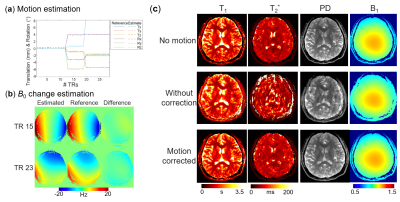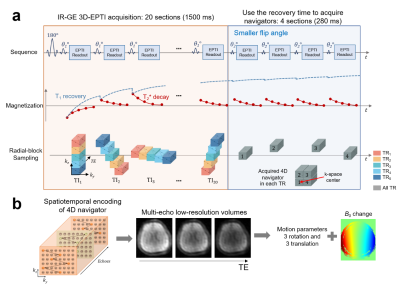Zijing Dong1,2, Fuyixue Wang1,3, Jie Xiang4, and Kawin Setsompop5,6
1Athinoula A. Martinos Center for Biomedical Imaging, Massachusetts General Hospital, Charlestown, MA, United States, 2Department of Electrical Engineering and Computer Science, MIT, Cambridge, MA, United States, 3Harvard-MIT Health Sciences and Technology, MIT, Cambridge, MA, United States, 4Tsinghua University, Beijing, China, 5Department of Radiology, Stanford University, Stanford, CA, United States, 6Department of Electrical Engineering, Stanford University, Stanford, CA, United States
1Athinoula A. Martinos Center for Biomedical Imaging, Massachusetts General Hospital, Charlestown, MA, United States, 2Department of Electrical Engineering and Computer Science, MIT, Cambridge, MA, United States, 3Harvard-MIT Health Sciences and Technology, MIT, Cambridge, MA, United States, 4Tsinghua University, Beijing, China, 5Department of Radiology, Stanford University, Stanford, CA, United States, 6Department of Electrical Engineering, Stanford University, Stanford, CA, United States
A motion-correction method is developed for 3D-EPTI with 4D-navigator acquisition that achieves accurate estimation of 3D motion and B0-inhomogeneity changes, allowing effective correction for fast and motion-robust quantitative imaging with negligible cost in scan efficiency.

Figure 5. Results of in-vivo experiment. (a) The estimated motion parameters using the 4D navigator compared with the reference estimation using high-resolution volumes. (b) Comparison of the estimated B0 changes relative to the first TR at two different head positions using the proposed navigator and reference acquisition. (c) Reconstructed quantitative parameters using 3D-EPTI data without motion (first row), with motion but without correction (middle row), and with motion correction (bottom row).

Figure 1. (a) Illustration of the IR-GE 3D-EPTI acquisition with 4D navigator. In each TR, a 4D block is acquired at each TI. 20 TIs are acquired for IR-GE with a golden-angle radial-block sampling, followed by additional 4 TIs for navigation that utilizes the same sampling in every TR. The optimized spatiotemporal encoding used for the block-wise 4D acquisition is shown in (b). 3D motion parameters and B0-inhomogeneity changes across the whole brain can be estimated from the reconstructed multi-echo navigators.